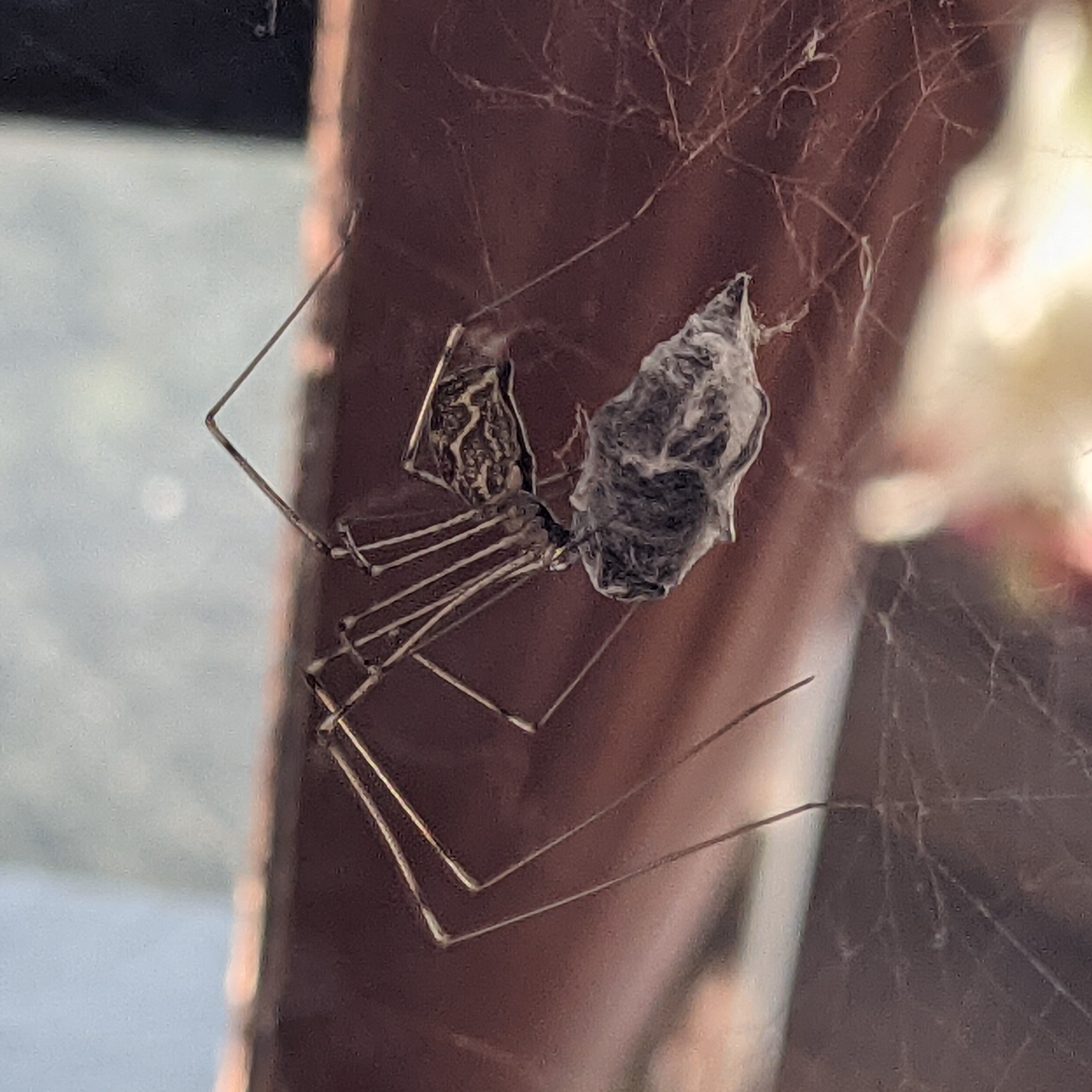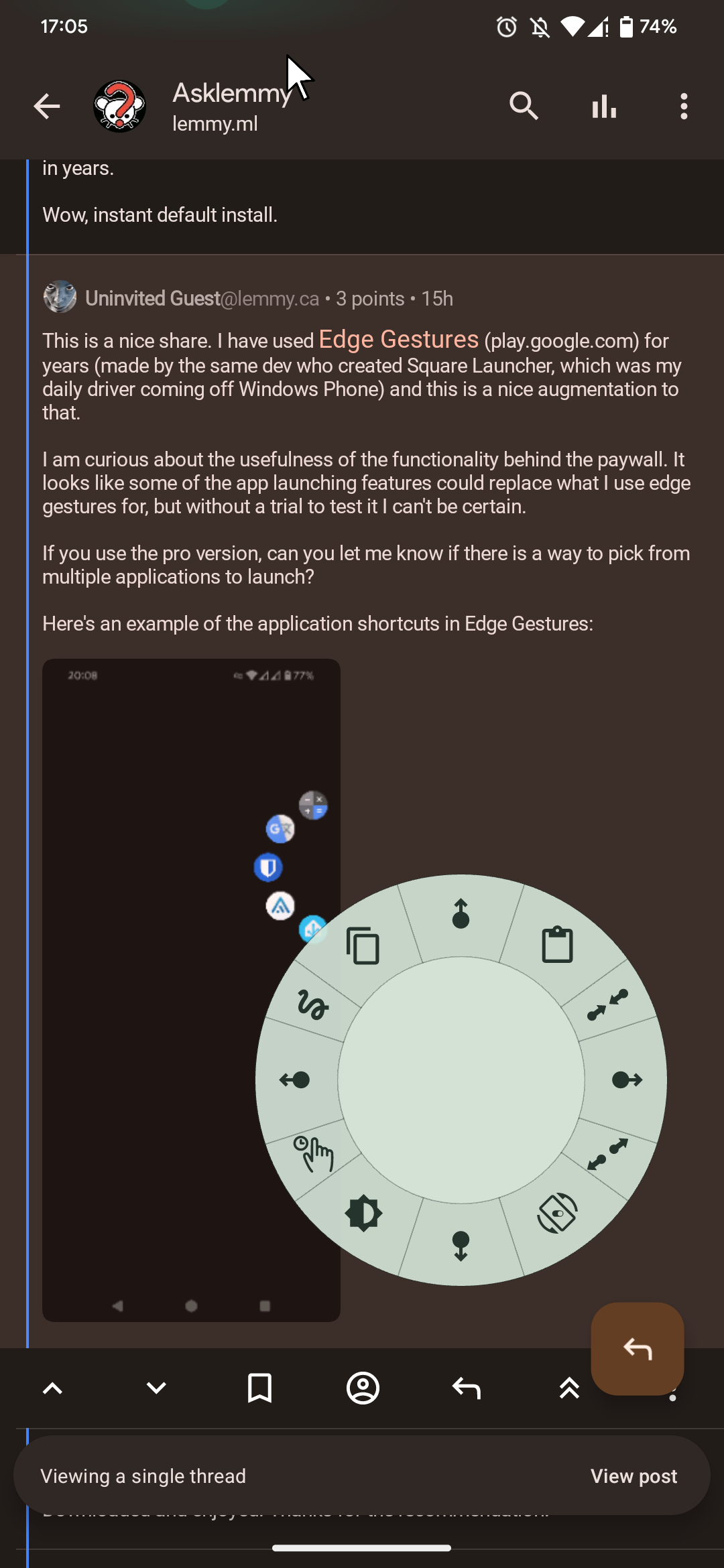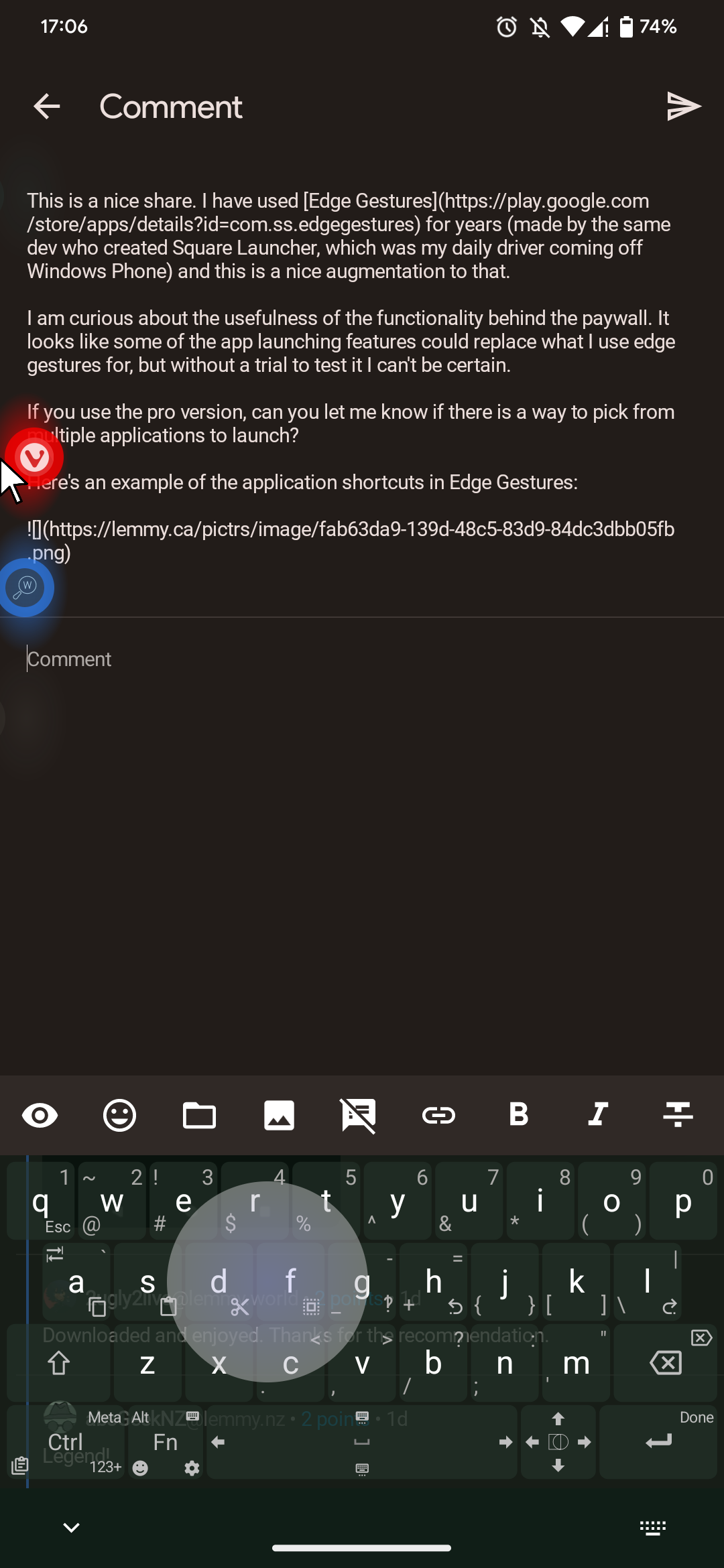

What does FUTO use? It works pretty good (based on my limited testing) and it works offline.
“…could’ve made it but it’s cozy in the rut…”


What does FUTO use? It works pretty good (based on my limited testing) and it works offline.


Unfortunately no.
I don’t think there is a FOSS one that supports it.


I only use FOSS ones. I hop between florisboard and unexpected keyboard, and I gave heliboard a shot again recently because it has the swipe/glide typing but I couldn’t stick with it because I was missing other features, so I’m back on floris.
Since I only use open source keyboards, I’m not really concerned about privacy…so no blocking of internet access.
I also thought about trying out the clipboard history, and also am wondering if it’s safe…
If you want to try FOSS keyboard again, HeliBoard is your best bet.
Initially made an account on lemmy.ml in 2022. I was eyeing the fediverse, and when I found that there is a “reddit alternative”, I wanted to check it out, but there wasn’t much activity so I didn’t use it much other than checking on it occasionally.
Then in 2023 I made an account on tchncs…when majority of users also hopped on lemmy.


Did you maybe miss the linked article? :D


What is even the point of “piracy groups”? What exactly can you find there that you cannot in other places designed for that, e.g., trackers, usenet, forums…?
What stable diffusion has a retouch option on PC’s then?
I’m not a stable diffusion guru, but yeah, you can remove objects using inpaint feature. It definitely wouldn’t be straight forward thing to do though, and probably not a great experience since web ui is not really good on the mobile devices, but I haven’t used it in a while, maybe it got improved.
And that is extremely ironic mentioning request it in ImageToolbox I actually already have haven’t heard back yet though.
¯\(ツ)/¯ I couldn’t have known you already did.
I’m afraid not. Only open source way of achieving that, that I can think of would be self hosting stable diffusion and using web ui on your phone. Which probably wouldn’t be really easy nor convenient.
A long shot would be making a feature request for ImageToolbox to implement something like that.


So, there are 2 main places for shortcuts/actions: tracker actions and edge actions.
These are my tracker actions

I set it so it activates when I tap and hold the tracker, it shows up those shortcuts. If I slide my finger towards one of the shortcuts, it activates it.
These are my edge actions

These are actions/shortcuts that you trigger by pushing the cursor to the edge of the screen.
You can pick any app from your phone or any of the actions available in the app, there are a lot… Like system controls (volume, brightness control, media playback buttons, screen lock, screen rotation, etc.) and you can also make a shortcut for Tasker/MacroDroid/Automate action. So basically, you can make a shortcut for almost anything you can think of.


I think it might be possible only in the paid version, but that’s exactly how it works, you just have to increase the Cursor area in Swipe zones settings.
And it does stay under the Twilight if you give Twilight the accessibility permission.


I think you are missing the point of the app. The cursor part of it is more of a gesture, or you can think of it as a “thumb extension”. The point is to help you avoid the inconvenience and save time by allowing you to reach farther parts of your screen without repositioning your hand. I called it a “phone touchpad” just because, when you activate it, a part of the screen is acting like a touchpad. You are not using it for a specific purpose of having a cursor on your phone, the cursor is basically just the tip of your “virtual extended thumb”. So it’s a utility/accessibility software.
Using a physical mouse would be the opposite of what this app is trying to achieve.


On Android, it’s probably a little utility software called Quick Cursor (it’s not FOSS). It’s incredibly convenient being able to spawn a cursor on your phone from thin air that you can use to reach the “unreachable” portions of your screen, especially if you are holding your phone with one hand. Besides being a “phone touchpad” it has a bunch of ways of triggering actions/shortcuts, for example: volume or brightness control, launching an app (I use it for launching a floating calculator, notes…), opening notification shade, copying text (it can copy any text that is under the cursor, even if it’s not selectable)…
It’s not that I couldn’t go without it, but it changed the way I use my phone and it would feel really weird without it. It feels like it should be a part of the OS.


I still use Sync but Thunder looks really promising. Very nice UI and tons of customization options.


What does reliable mean? You want the crowd’s rating of the movie to align with yours, which is pretty much impossible. I find Letterboxd ratings to be more sensible than IMDB’s, so that is what I use. But I also read a few positive and a few negative reviews to get a better idea.
There is a site called Flickmetrix which has advanced filters and also an average ratings (critics, metacritic, IMDB, Letterboxd). Maybe that would be helpful to you…


Pro tip: Point the fan so that it blows outside and DO NOT put it directly on the window or right next to it. Instead, move it ~50cm away from the window to take advantage of Bernoulli’s principle (push the air out more efficiently by pulling the air surrounding the fan).
You can cool down the room even if the door is closed. You are lowering the pressure inside your room so the outside air is forced to rush in. If you place the fan like I explained, and point it at the lower part of your window and you put your hand next to the upper part of the window, you will feel the cold air coming in.


Overthinking everything and being a “perfectionist”. So hard to finish or even start doing anything.


Quote from some old guide:
The Importance of Being Connectable:
When it comes to torrents, being connectable can go a long way in helping your ratio. Connectivity is directly related to port forwarding, your router, and incoming torrent connections. Here’s how it works:
You upload a new torrent. After going through the upload page and adding the torrent to your client, the client connects to the tracker to do the following:
- Tell the tracker it is going to begin seeding a torrent.
- Ask the tracker if there are any peers it doesn’t know about.
Normally, no one has downloaded the torrent from the site between the time that you upload the torrent and when you add it to your client. So your client will now wait, for 45 minutes (or however long it’s been told to wait by the tracker), until it will connect back and ask for more peers.
Now suppose someone downloads your torrent from the site after you added the torrent to your client. Normally, the person’s client will ask the tracker for peers, to which the tracker will return your IP address to connect to. That client will then connect to your client, using the IP address and port number it got from the tracker pertaining to your client and the port it accepts incoming connections on. This is where being connectable comes into play. We’ll assume your IP address is 139.129.43.5 and your port number used for torrenting is 3058.
When the peer attempts to connect to you on that designated port, your router has to know what to do with the incoming connection. It receives an incoming connection from the peer, on port 3058. If you have your port forwarded to your client correctly, that is, you’ve told the router what to do with incoming data on a specific port, the router knows to send anything coming in on port 3058 to the computer your client is running on. Now, if you are not connectable, the router doesn’t know what to do with items coming in on port 3058, so they are discarded, and the other peer isn’t able to connect to you.
If your port isn’t forwarded correctly, the peer who just added your torrent to their client will have to wait for 45 minutes, until your client updates with the tracker, and gets the new peer’s IP address and port to connect to. If the peer is connectable, you will then make an outbound connection to them, and it will connect successfully. Outbound connections aren’t normally blocked by a router, unlike incoming ones, this is why a client doesn’t need a port forward for outgoing connections. This scenario is also why you can still seed even if you aren’t connectable. This can have very negative consequences for your ratio though as I will now explain.
Here’s how not being connectable will hurt you. When you are seeding a torrent in a large swarm and a new peer comes online, his client will attempt to make connections to the other peers. If you aren’t connectable, you will have to wait (at max) 45 minutes until your client learns of their existence, before you can start uploading data to them. During this time the peer is getting data from other peers, but not you. By the time your client finally learns of the new peer’s existence, the client will already be done downloading! You won’t get nearly as much upload than if you were connectable. Depending on the size of the torrent, your client may not get any upload for that peer, because he will have completed the torrent before your client even knew he was present.
The absolute worst case scenario is when both peers aren’t connectable. Neither peer will be able to connect to the other, and both will sit without connection indefinitely.
Just a smoother and faster experience. No dead links, no slow downloads, no files that are separated into multiple parts…
You get a VPN and you don’t have to worry about “getting caught”. Private trackers just further elevate that experience and get you access to better content.